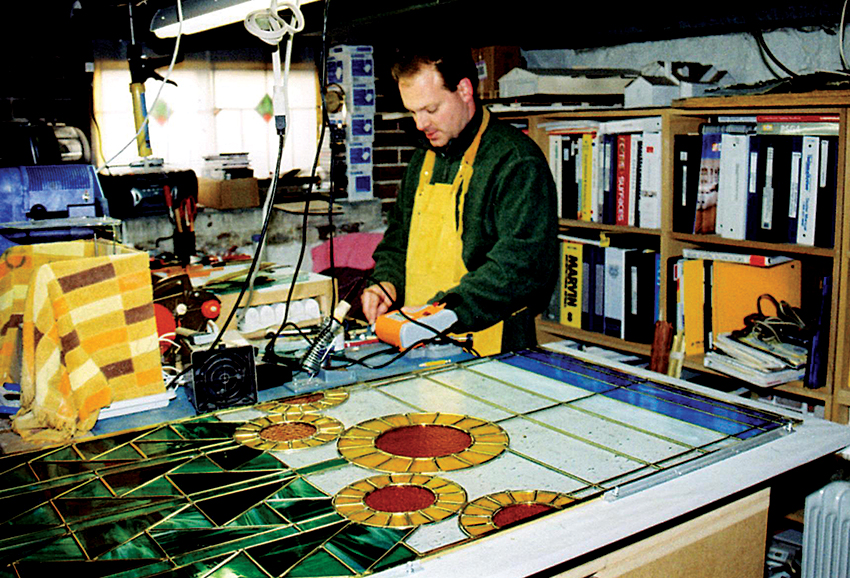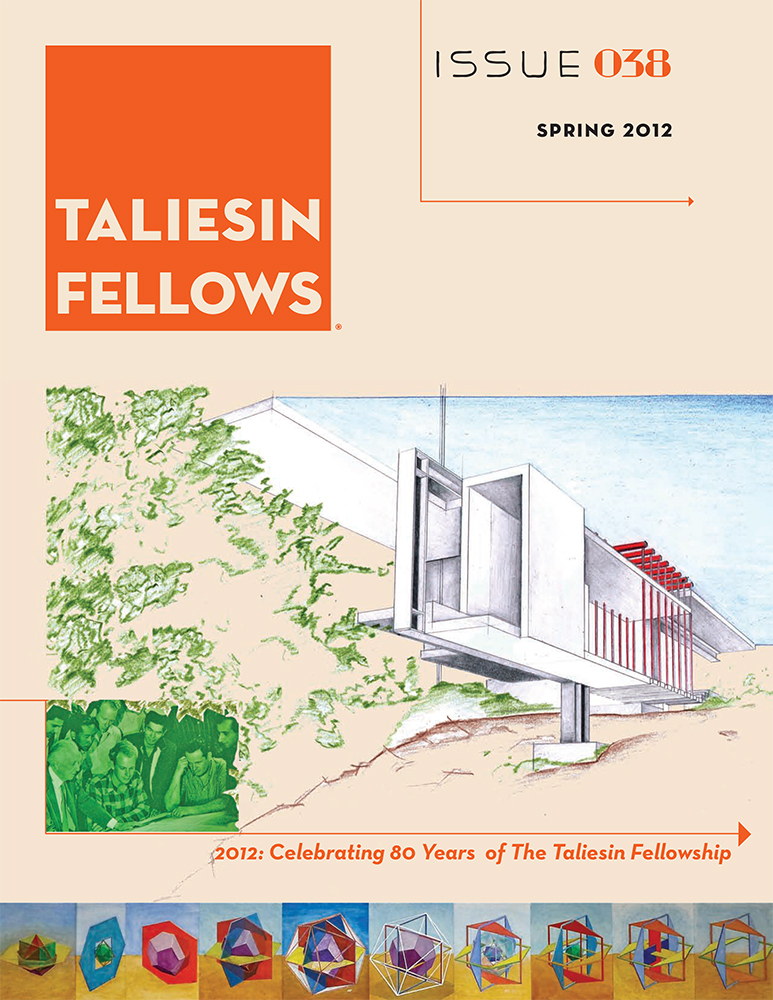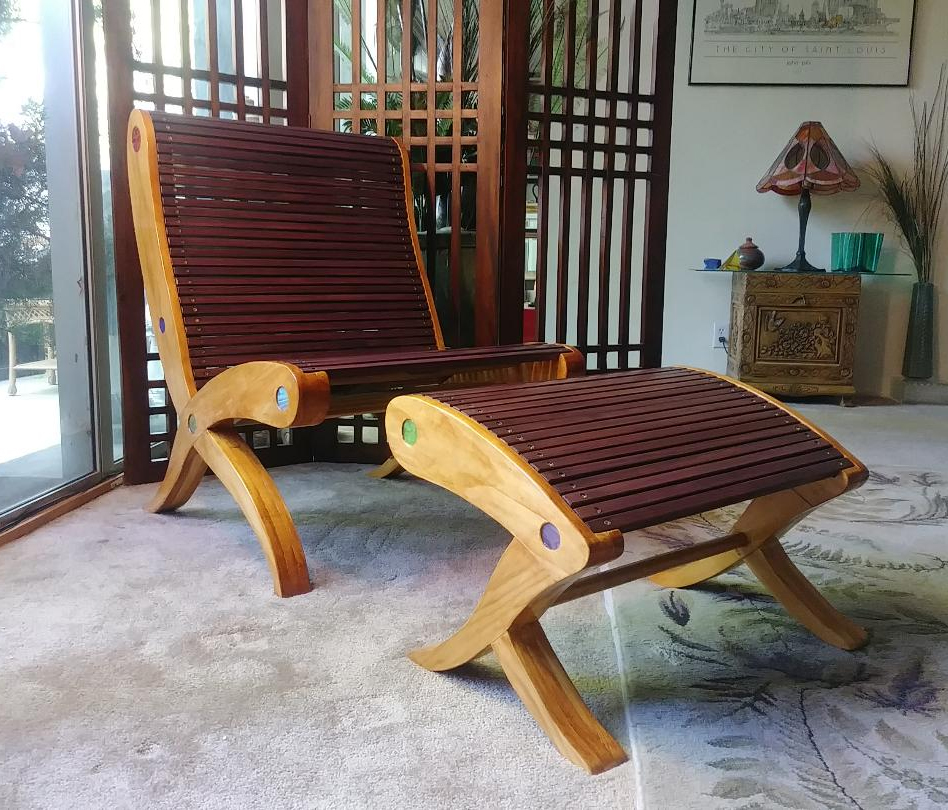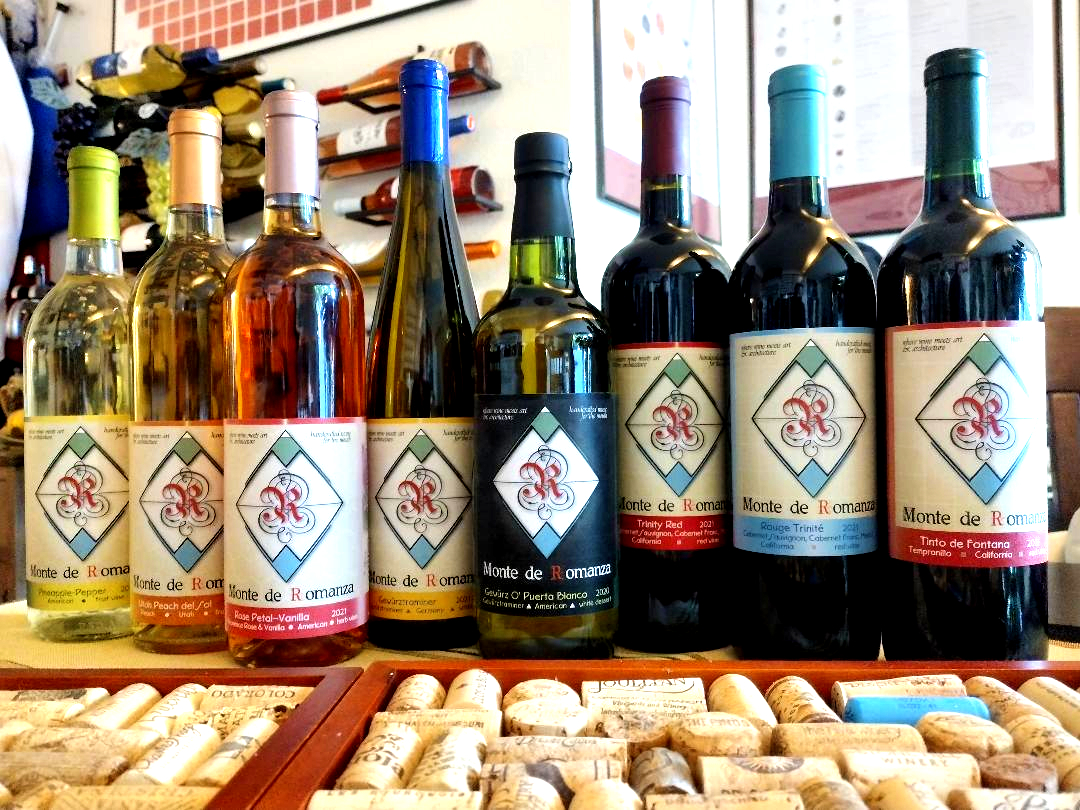

Today we’d like to introduce you to Michael Hawker.
Hi Michael, we’d love for you to start by introducing yourself.
While many architects will claim to have dreamed of building designs at a young age, or even drew them, my interest was more broad. I liked drawing in general, but loved aviation design — the sleek lines of jets — while also taking interest in all things medieval — the designs of swords, shields, family crests, castles and fortresses. Some of what I enjoyed most were books that featured schematic and annotated drawings, section cuts, or cut-away views that would diagram the plan, whether it was an ocean liner and its various compartments, or a castle with its various rooms and labyrinths. In high school, I gained proficiency in mechanical drafting, but admit my love was far greater for commercial art. I enjoyed composition, and developing concepts out of pieces that normally would be considered a problem. Though higher level of mathematics was not my forte, I did well in geometry.
What could possibly be my major in college with that milieu?
So I graduated from high school knowing that engineering was not for me. Too much calculus! I was never encouraged to enter graphic design or art school. Perhaps a career of too little money! So architecture school was where I landed for college, a medium of the creative with the functional. Interestingly, many of my joys in youth translates into what architects provide: problem solving, drawing annotated diagrams, drawing plans and sections. The design of a home or office is as much a problem of space planning, efficiency, and functionality as it is beauty. The same holds for the design of an ocean liner or passenger aircraft.
It would be my junior year in college that I fully committed to architecture as a degree path. I learned about the work of Frank Lloyd Wright, the notion that his design were a correlation between its whole and all its constituent parts. Everything was in harmony. Wright’s designs fit the landscapes they were situated and were truly “American,” not derived from European Styles. A symbiosis between modern living and nature existed. This resonated with me.
While most of my college professors were far more interested in the avant-garde, the latest and greatest in design, and had more affinity for architects such as LeCorbusier, Mies van der Rohe, Frank Gehry, and Daniel Libeskind. The drawings produced by students of this philosophy always featured dashed lines flying in all directions. One had to be a Ph.D. physicist to understand them sometimes. For me, I could never relate to them, and could never find the “humanity” in those types of designs. I found my affinity towards the more “Romantic” in architecture. Architects that built with brick, stone, and wood and embraced nature felt more “home” to me than expressions of steel and plastic. I loved the work of John Soane from the 19th century, loved the work of traditional Japanese tea houses, and English cottage houses. In college, I took to Frank Lloyd Wright’s work, but also the work of William Adair Bernoudy, Alvar Aalto, E. Fay Jones, Alden B. Dow, and Charles Rennie MackIntosh.
The path toward “Organic Architecture” was cemented for me during my apprenticeship in the Taliesin Fellowship, the school Frank Lloyd Wright and his wife started in 1932 as training ground for young architects. Though I attended in 1994, long after Mr. Wright had passed, almost all of my teachers and mentors were those who had studied with Wright for many years. The Fellowship was elusive, exclusive, but all inclusive. With 30 students and 30 faculty sharing the campus on 600 acres, the life was one of “all in.” Architecture embraced everything in life, and everything in life was opportunity for creativity and learning, whether cooking, landscaping, construction, or studio work. A day of participation could range from shoveling manure for an orange grove to dining in black tie formal wear with dignitary guests for a Taliesin Evening.
When I entered Lawrence Technological University to complete my graduate architecture studies, I began working full time as a Project Director for architect Gunnar Birkerts. If Frank Lloyd Wright is associated with the American “dialect” of the Organic Architecture “language,” Birkerts represented the European “dialect” for me. His lineage traced to architects Alvar Aalto and Eero Saarinen. I always felt that my training in Organic philosophy was greatly complemented with my association with Gunnar Birkerts. Also while in graduate school, I began an association with Canadian architect Douglas Cardinal, a native American, whose Organic architectural philosophy was deeply influenced by his heritage.
My apprenticeship in architecture included a few firms, but it was the six years in a small design-build interiors-architecture firm that truly advanced my learning-by-doing in the nitty gritty of practice, a kind of baptism by fire. Those years included not only producing designs on paper for clients and their requests — whether it was a kitchen remodel, an addition, or a piece of furniture — it also involved nearly daily visits to construction sites and acting as a superintendent. In many cases, I was as much a part of the labor crew as the contractors. Few young architects out of school today get that experience, and virtually no larger office ever supports it. But these years for me was where the “rubber met the road.” I learned how to build. I learned managing crises, or when something I drew did not quite line up on site and how to resolve it with men waiting for instruction to continue working. I became a much better architect for having this experience.
Since 2003, I have had a private practice in architecture, glass arts, and graphic design. At one point, I held the helm of three distinct businesses. All of that was the culmination of my prior education and professional experience. The learning never stops, whether I am working for an architectural firm or working on a client project. Being active and engaged is what is most important and living a life where one keeps their palms up and open to new experiences. I volunteer in various ways for organizations with the same mindset, that something in that experience will allow me to grow and learn.
I’m sure it wasn’t obstacle-free, but would you say the journey has been fairly smooth so far?
Did anyone ever tell you life was easy? I suspect not. Professionals in any discipline — whether it is in the culinary arts or medicine, or any other field — experience struggles. This is part of the great mystery in life, how our experiences shape who we become, what we learn, how we face adversity, and dealing with low points in order to achieve high points. No one ever walks through life without being surprised. Some surprises are truly wondrous and worth celebrating, while others we lament and truly wished they could have been avoided.
There are probably too many moments of struggle to mention in this forum that I recall. For as many successes and accomplishments I’ve experienced, there are probably an equal number of failures and disappointments. A good example were during my college days. Through my first two years I wasn’t focused adequately on the scholastic side which reached a low point by the end of my fourth semester. I was never the true “scholar” all through high school as example, earning B’s and B+’s, but by the end of my sophomore year in college, I’d reached a low 2.0 grade point average, which threatened future graduate school plans. It took an enormous surge in buckling down and hard work and I managed to graduate with a laudable B+ average. I discovered more joy in my studies and it heavily led to great success in graduate school, where my grade points were regular honors and dean’s lists appearances even while working full time as a full time student.
In 2008-09, the economic downturn nationally forced a lot of architects out of work, closures of numerous well-established firms, shrinking of building departments, and so forth. I was in private practice at the time and felt the crunch enormously. The struggle to survive could only last about a year before a move needed to be made. Literally, I relocated out of St. Louis and took a 180-degree career switch and began working at a pathology laboratory in Salt Lake City. My business, which had steadily grown and was finding success for several years, was forced into hibernation. It was a difficult pill to swallow. Seemingly, I had lost my career, my work, my home, friends and family that were in proximity. I did not ask for it and clearly it was a negative life surprise. I held anger at the world, personal shame, feelings of failure — all of it. It took a long time to heal from that wound.
But the new trail led to a number of successes that followed and allowed opportunities to learn in ways that had not been possible before. I earned several post-graduate degrees in Energy Management, Graphic Design, and Mass Communication along with a host newfound skills. As painful as the process was to extricate one’s self from a path that seemed to be humming along in comfortable surroundings, the moves brought forth new surroundings, new people, and new work. The greatest lesson was learning humility.
Having passed the mid-point in my life, I am still learning from obstacles and bumps in the road. There is a principle I would like to firmly believe, despite how difficult it may be at times: everything we experience has a lesson in it, and more particularly, the mistakes and low-point experiences we endure often prepare us for what lies ahead. I tend to believe that life does not hand out what we cannot overcome. Strife can create a fire within ourselves to push harder or push in avenues just outside our normal in order to open up new doorways.
When the pandemic hit in 2020, I realized a couple of personal goals that otherwise would not have happened otherwise. The following exemplifies perfectly how creativity flows through me. There is more than simply architecture, art glass, and graphics that can be outlet for creative design.
The first was designing and building my own chair. Architects are known for having designed furniture and there are many great examples from Frank Lloyd Wright to Charles Eames. I designed and made “The Curova,” a chair and ottoman made entirely of wood. It is a unique problem to solve when one thinks of it. The chair, though sounding simple in premise, is an exercise in structural design and beauty. Though admittedly, I did a lot of sanding to get things right, I feel the result was exceptional and a great learning project.
The second was trying a hand at making wine. Also during the pandemic, when state-run stores in Utah were threatening potential closures, I thought it was a good moment to take my interest in wine and wine study a step further. After buying equipment and supplies, the fermenting was underway. For many, this may have become a simple weekend hobby, but for me, I turned it into a semi-professional endeavor. I created a brand, Romanza Wines, designed TTB-approvable labels, and spent a great effort in “perfecting” the bottled product. Red wine, white wine, a sparkling, some Port-like wine, fruit wine, even herbal wine have been bottled with truly an astonishing success. I never thought I could have made banana wine, rose petal wine, or pineapple-pepper wine, but those experiments turned out phenomenal. Learning about aging with oak, experimenting with degrees of sweetness, etc., have been super fun. Since 2020, my efforts have produced about 50 gallons per year.
As you know, we’re big fans of Zoetic Architecture and Design, LLC, and Zoetic Arts, LLC. For our readers who might not be as familiar what can you tell them about the brand?
I licensed as an Architect in 2003 after approximately 12 years of apprenticeships and graduate study. My private practice, Zoetic Architecture and Design began immediately that same year. A year later, I opened Zoetic Arts to handle art glass commissions and graphic design projects. Both have operated at various degrees of activity now for over twenty years. The architectural practice has been predominantly residential (75%) and some commercial, such as offices, retail, and cultural projects. With intention, my specialty has always been about working a process for a client in order to achieve a high quality result. The ultimate goal is joy for the client, smiles on faces.
“Zoetic” (which sounds like poetic, but with a ‘z’) is a term that I’ve used since the 1990’s to describe a process of design that revolves around life. “Zoe” is the Greek word for “life,” and “zoetic” implies an evolvement over time.
The closest philosophy that relates to what I do is “Organic Architecture,” the philosophy made famous by the great American architect Frank Lloyd Wright, and continued through a select few who have fully endorsed the approach. At its essence, this philosophy embraces principles over prescriptives, ideas over rules, and seeks to find creative solutions for individuals in lieu of for the masses. Everything I do in design work is a response to the project’s specifics, the client’s needs, and the site for which it is designed.
This sounds simple, and one may find many firms or professionals who claim they work toward this goal, but it always astonishes me how mediocre our houses and places of work have become; I’m left to think that “beauty” was never discussed as a goal beyond the square feet and cost. Earning wealth has never been a motivator in life, and that has translated into my businesses — whether that’s good or not good I cannot say. That may shock a lot of business owners reading this, may be labelled as a recipe for failure, but I’ve always pursued a path because of how it resonated within myself first. Being honest with a client and faithful to an ethical practice, providing the best for a client’s project were always more important to me than a personal design agenda or simply making a fee.
As example, during my years in Salt Lake City my architectural business was purely pro bono, working for former clients, friends or family. Since I could not offer full time commitment, the benefit for the client was knowing they were getting quality at virtually no charge! But the time was mine and that was the tradeoff. As I field calls for new clients now, clearly ‘pro bono’ is not sustainable (when I win the lottery, we can talk about ‘pro bono’), but knowing the rates firms charge, I know that my attention to quality cannot be matched for the fees.
Hinting at it earlier, I attended the Taliesin Fellowship in the mid-1990’s, the school that was started in 1932 by Wright. From its existence between 1932 and 2020, perhaps only 1,800 people worldwide have studied at Taliesin. About half of them no longer live given their tenure in the 1930’s through 1950’s. As my life has gone, while I lived in St. Louis, I was the only known Taliesin-trained Fellow at the time in that area. The same has been true while I lived in Salt Lake City, and now the same again as I reside in southwest Michigan. The Taliesin training was special. I learned a way of life and it resulted in appropriate architectural form.
I complemented that training under my employment with Gunnar Birkerts, and during the same period of time, with Douglas Cardinal. I learned from the both of them a process-oriented toward Organic architecture. To celebrate particulars, Birkerts employed the use of metaphors in his architecture. Similarly, so did Cardinal, but Cardinal’s work was more akin to an architecture “of the earth.” Both Organic, both modern, but each — you might say — spoke a different dialect of the Organic language.
All of this, especially combined with my astute study of many other Organic practitioners in architecture, left an indelible influence on my own thinking and approach in design, and placed an importance on appropriateness and beauty in design.
I see today many fellow architects who get caught in the trappings of building codes, exact square footages, and hours versus fees schedules. Constraints. I’m not suggesting ignoring parameters such as those, but what about the space to be occupied? What does it feel for the inhabitants to reside or work in my design? I believe the “practice” of architecture for many architects has been reduced to tabulations and keeping within the business limits, which is sad because the short-sighted view of design results in buildings that exist for decades. Why not think about enduring design?
In recent years, I’ve been working in other architectural firms. This has been a great experience, particularly working on project types unique from and scales far larger than my private practice.
Is there anything else you’d like to share with our readers?
The breadth of readers may span across aspiring and budding business owners to local entrepreneurs, creatives and community leaders. Some of you may be very young, others well established. Regardless of your position in life or place in your career, I’d like to impart the importance of two significant pieces of advice.
The first is to not let fear of the unknown, or fear of failure, dictate your ambitions. Surprise is inevitable. As difficult as it may become at times, embrace all there is as moments to learn, to grow, and serve as a springboard for future successes and new trails of adventure. This applies to clients you serve, people you meet, employers you work for, and projects you get involved in. Embrace it as opportunity.
The second bit of advice is find ways to give back as a volunteer. For many, this may be difficult timewise — jobs, spouses, children, their activities, etc. — it is understood, but finding ways to connect with others and stretch the realm where your expertise and energy can impact others without expectation of a “return” is important in our world and communities (maybe more so in our current times than ever before). You never know which door you leave open for another that results in great things.
Contact Info:
- Website: https://www.zoetic1.com



















